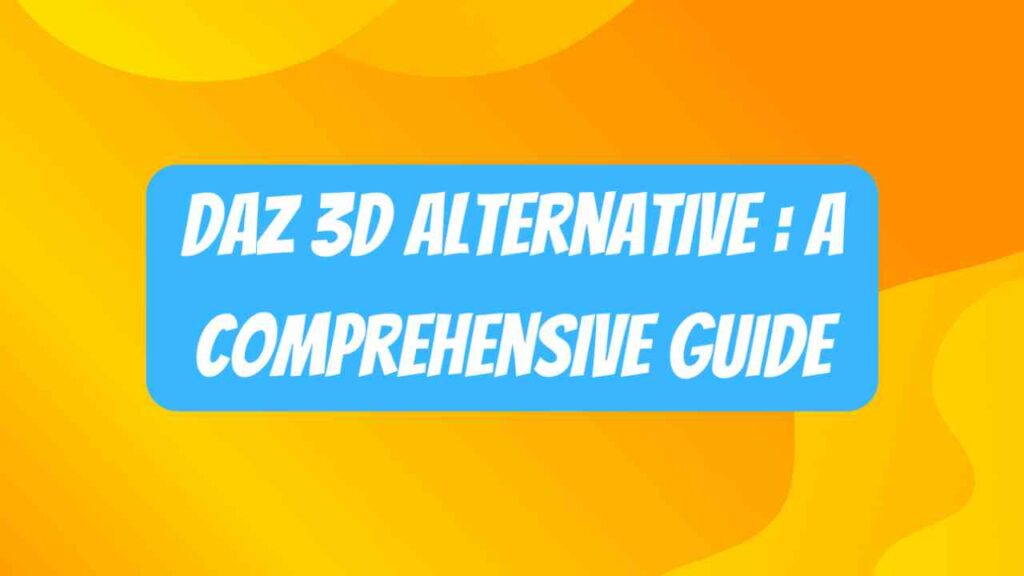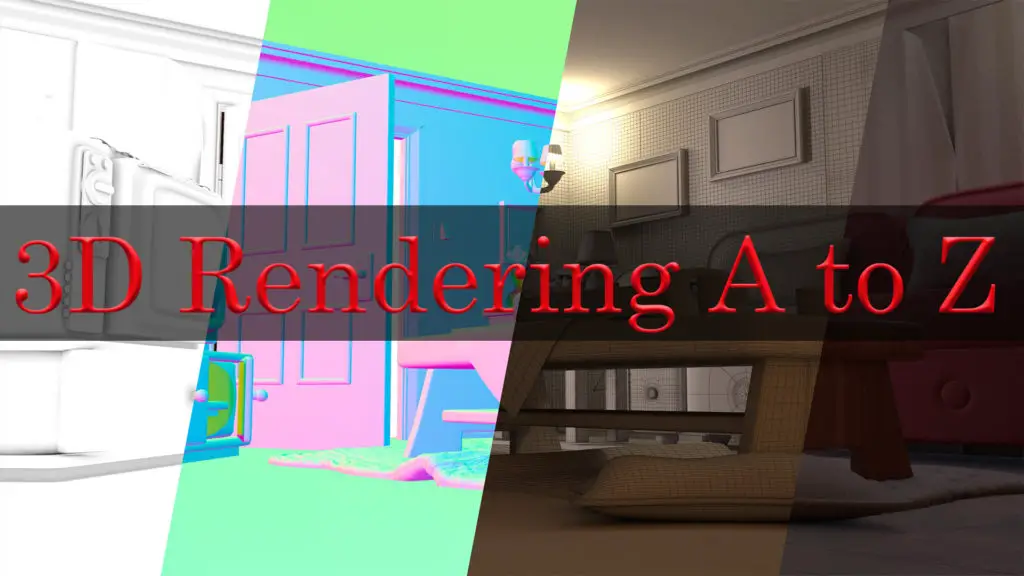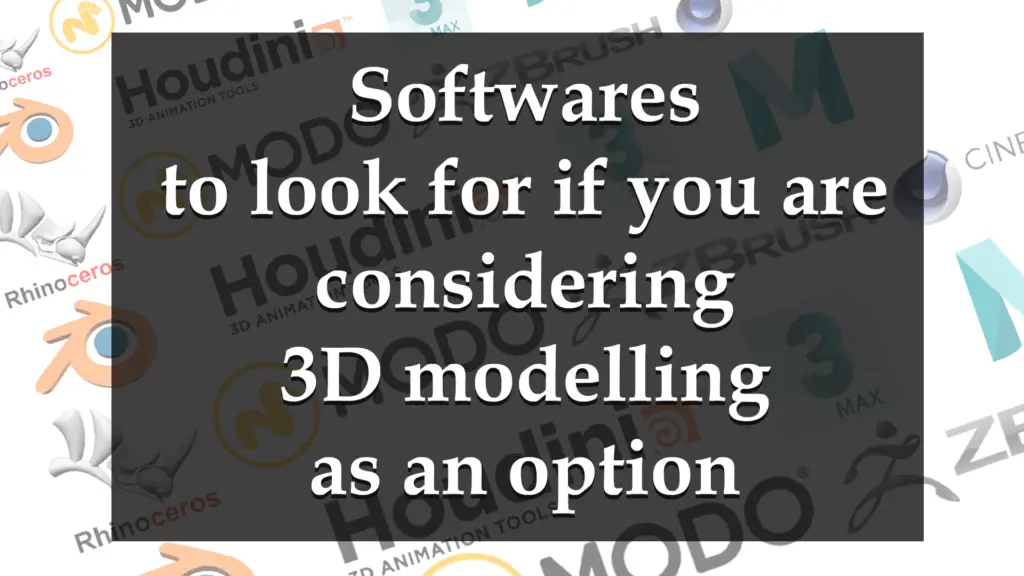THIS ARTICLE MAY CONTAIN AFFILIATE MARKETING LINKS! IN CASE YOU MAKE A PURCHASE THROUGH ONE OF THE LINKS, WE'LL GET A SMALL COMMISSION. WITH NO EXTRA CHARGES TO YOU. THANKS!!
In today’s digital era, technology like Daz 3D has become a magnificent tool in the field of 3D creation, offering users a broad range of applications for character designing, scenery creation, and animation. However, no software is without limitations. Understanding Daz 3D, its capabilities, strengths, weaknesses, and possible alternatives, allows users to grasp the full spectrum of what 3D modeling software can offer and helps identify which software is best suited to their specific needs. The following article will delve into the depths of Daz 3D, look at why some might seek its alternatives, provide a comprehensive review of these substitutes, and impart guidance on choosing the most appropriate Daz 3D alternative.
Daz 3D is an eminent 3D content and software producing company, famous for their Daz Studio. The studio, which is free to use, enables users to develop high-quality 3D models, illustrations, and animations. Availability of a vast catalog of intricately detailed 3D human models and a suite of customization options are the staples of Daz 3D, thus it’s favored by a large faction of digital artists, game developers, and animation studios.
The software’s strength lies in its simplicity of function, intuitive interface, and robust selection of assets. The result is a capable tool perfect for beginners aiming to delve into the world of 3D modeling with minimum barriers. It also gives the more experienced users the flexibility to create complex scenes and figures with relative ease.
However, Daz 3D comes with its fair share of limitations. Despite its user-friendly layout, a steep learning curve is required to fully comprehend and utilize the functions. Performance issues are common with rendering large scenes or complex characters, making it demanding on your system resources. Furthermore, although Daz Studio is free to use, the cost of purchasing assets from the Daz marketplace can quickly add up, making it a costly endeavor for some users.
An Exploration of Daz 3D Alternative
Recognizing the limitations of Daz 3D, it’s completely understandable why investigating other options could be beneficial. Different alternatives go beyond providing a diverse range of features, accessibility, available assets, and various price points. Consider Blender, a free, open-source 3D creation tool. It houses the same modeling, rigging, animation, simulation, rendering, compositing, and motion tracking capabilities as Daz 3D but with an expansive, helpful online community for novices.
Another option, Poser, mirrors Daz with its focus on character animation and design but sports a more easy-to-use, artist-friendly interface. To add, it boasts a vast library housing ready-to-utilize 3D human figures, clothing, props, and scenic designs. Therefore, for users desiring simplicity without conceding 3D content quality, Poser may serve as an appropriate substitute.
SketchUp, on the other hand, provides a user-friendly route to designing 3D models. Although it’s better-fitted for architectural design and civil engineering due to its focus on geometry, it’s a worthy contender as it uncomplicates 3D modeling for beginners via an easily navigable interface topped with numerous online tutorials.
Each alternative shines in its unique way, and the final choice hinges on your project needs and personal preferences. Evaluate your familiarity with 3D modeling, your budget, specific feature requirements for your work, and the software’s system requirements. Although some alternatives may not match Daz 3D in certain areas, they could surpass it in others, making them an attractive choice based on your unique requirements.
Why Look for Daz 3D Alternative
Understanding Daz 3D
Daz 3D is a versatile software tool that enables users to create, modify, and bring to life 3D models. Its extensive library of pre-designed models and user-friendly interface make it a favorite among hobbyists and professionals alike. However, despite its universality, Daz 3D does have its areas for improvement.
Complexity
The most significant challenge with using Daz 3D is its complexity. The software is designed with a lot of features and functionalities to cater to different needs. While this is advantageous for professional users who demand granularity and precision, it can be overwhelming for beginners. Even with onboard tutorials, the average user may find the learning curve steep, hence necessitating a simpler alternative.
Resource Heavens
Daz 3D is a resource-intensive software application. It requires a high-performance computer to run smoothly, especially when creating more intricate models and scenes. The system requirements can be a significant hurdle for users with lower-end computers. Furthermore, the software can slow down considerably or even crash when managing large volumes of data.
Cost
While Daz 3D is free, most of its expansive content library is not. Daz Studio offers most of its 3D models and assets at a hefty price. Acquiring an extensive array of models to use in your work can quickly become expensive. Therefore, if you’re working on a tight budget or just exploring 3D modeling as a hobby, the costs can be prohibitive, necessitating more affordable or free alternatives.
Compatibility
Another limitation is the lack of widespread software compatibility. Despite its capabilities, Daz 3D might not integrate seamlessly with other popular software. While it does have import/export functionality, users have reported issues while transferring files to and from software like Blender or Maya. This lack of compatibility can hinder workflows, especially in a professional environment where multiple software programs are in use.
Limited Editing Tools
Despite being a capable 3D modeling and rendering software, Daz 3D’s suite of editing tools leave something to be desired. The software is limited when it comes to sculpting capabilities, and its texture painting options are also basic compared to other software. For users who want to indulge in detailed sculpting or intricate texture painting, Daz 3D may not be the ideal option.
Exploring the Alternatives
While Daz 3D is indeed a powerful and feature-rich software, there are occasions when some users might encounter limitations that prevent them from harnessing its full potential. It’s these struggling experiences that may push users to venture into the exploration of alternatives to Daz 3D.
In-depth Reviews of Daz 3D Alternatives
Blender: A Worthy Competitor
Blender instantly emerges as a worthy contender when it comes to discussing alternatives to Daz 3D. Recognized for its highly adaptable and versatile 3D modeling capabilities, this open-source software is also applauded for features ranging from animation to game creation, video editing, and rendering. The high-quality models manufactured by Blender certainly rival those of Daz 3D.
While the user interface may seem a little daunting for a beginner, those familiar with 3D modeling might find Blender a thrilling platform. It’s worth noting that despite being free, Blender requires significant computing power, potentially requiring a hardware upgrade involving an additional cost.
The Payoffs and Downsides: Blender shines with its extensive features, adaptability, and being zero cost. On the flip side, its intricately complex user interface and relatively high computational requirements may be seen as drawbacks.
SketchUp: Simple and Intuitive
If ease of use tops your priority list, SketchUp provides a remarkably intuitive platform for 3D modeling. Unlike Blender, SketchUp’s user-friendly interface is welcoming for beginners. However, it doesn’t compromise on the quality of output it generates.
From architectural design to video game design, SketchUp caters to a wide range of uses. The software comes in both free and premium versions. The premium version offers a broader spectrum of advanced features and costs $299 per year.
The primary advantage of SketchUp is its simplicity. Even someone new to 3D modeling can produce intricate designs with ease. In terms of downsides, some users have reported difficulties with complex rounded shapes and intricate details, limiting its functions comparatively.
AutoDesk’s 3DS Max: Professional’s Choice
A heavyweight in the realm of 3D modeling, AutoDesk’s 3DS Max, offers a wealth of features geared towards professionals in game development, animation, visual effects, and architectural visualization. Equipped with sophisticated modeling tools, realistic rendering options, and animation capabilities, 3DS Max stands tall as a powerful Daz 3D alternative.
While it promises high-quality output, the usage can be quite complex, requiring a certain degree of expertise. Also, at a cost of $1,620 per year, it is a significantly pricey alternative.
The strengths of 3DS Max largely lie in its professional-grade tools and high-end rendering quality. On the flip side, its complexity and high cost may pose a barrier for non-professionals or beginners.
Cinema 4D: Harmonious Animation and Rendering
Cinema 4D strikes a balance between the complexity of Blender and the simplicity of SketchUp. This software is noted for its seamless animation and rendering abilities. Its MoGraph toolset is particularly noteworthy, enabling artists to effortlessly produce complex motion graphics.
Cinema 4D is geared towards professionals, much like 3DS Max. Meaning, newcomers may need more time to truly get to grips with its extensive features. Prices for a standalone version of Cinema 4D begins at $59.99 per month.
The top-notch rendering and impressive animation abilities are certainly advantageous. However, the high monthly cost and sizable learning curve could be seen as potential downsides.
Choosing the Right Daz 3D Alternative
Determining Your Requirements
It’s critical that you ascertain what functionalities you need from a Daz 3D alternative in order to align with your project or workflow. Identifying specific requirements will guide your decision among the myriad of software options available. Whether you’re looking to model, animate, or render objects and scenes, these tasks should be strongly supported by your chosen software. For instance, some users might need extensive rigging tools, while others require advanced texturing capabilities. Consider whether you need features like 3D painting, particle systems, and simulation tools. Projects of varying complexity might necessitate support for different file formats, import/export capabilities, and multi-layered editing.
Affordable Options
Budget is another important factor. Not all 3D software come with the same price tag. Some Daz 3D alternatives can be quite costly, while others offer free versions or highly affordable rates. Blender, for example, is a professional-grade, open-source 3D software that is known for being completely free. Sketchup, on the other hand, has a lightweight free version for basic use, and a complete professional version that requires a subscription. It is pivotal to understand what you are getting for your money, so look closely at the features offered in relation to the cost.
Levels of Expertise
Your expertise level may play a significant role in your choice of 3D software. Some programs are tailored more towards beginners, with easy-to-use interfaces and simpler controls, like Tinkercad or Sketchup. More advanced software like Blender or Cinema 4D may have steeper learning curves, but offer more flexibility and depth in return. Video tutorials, comprehensive guides, and supportive communities can help overcome these challenges, helping you grow and enhance your skills over time.
Case Studies and Examples
Let us consider an example of a hobbyist aiming to create simple 3D models for a board game. They may find Tinkercad or Sketchup sufficient because of their user-friendly interfaces and online support. A professional animator, in contrast, might consider Blender or Maya because of their sophisticated animation capabilities, despite their complexity.
Another case study could be a small game development studio with a limited budget. They may opt for Blender, as it offers a comprehensive suite of tools for modeling, rigging, animation, simulation, rendering, compositing, and motion tracking. Its zero cost also ensures teams can channel funds into other vital aspects of the project without compromising on the quality of their 3D artwork.
In conclusion
There are numerous alternatives to Daz 3D, with options available for every skill level, budget, and purpose. Determining the best fit for you simply comes down to understanding your specific needs, limitations, and goals.
Thus, as the digital sphere continues to expand, the need for versatile and efficient 3D software increases. Daz 3D and its alternatives play an integral role in this space, each with distinct features, capabilities, and complexities to cater to a range of users and their individual needs. Knowledge and understanding of these applications can significantly impact the results of your project, and ultimately, your satisfaction with the software. Therefore, this information is designed to empower you, the user, by providing you with a multifaceted insight into Daz 3D and its alternatives, enabling you to make a well-informed decision that significantly benefits you in the 3D creation scenes.







